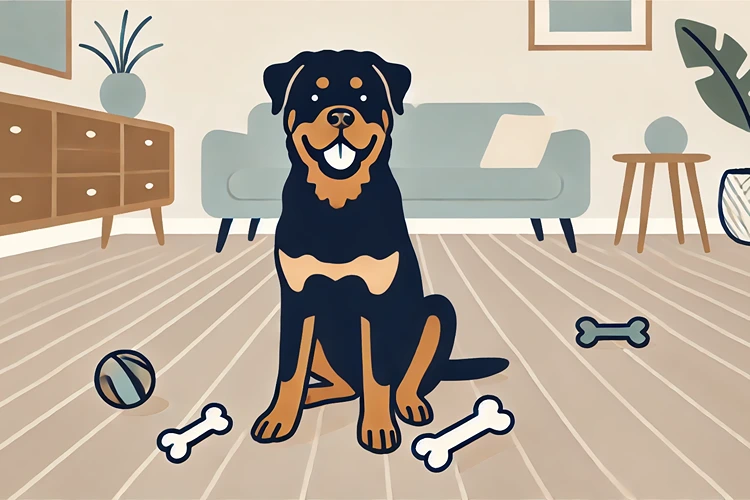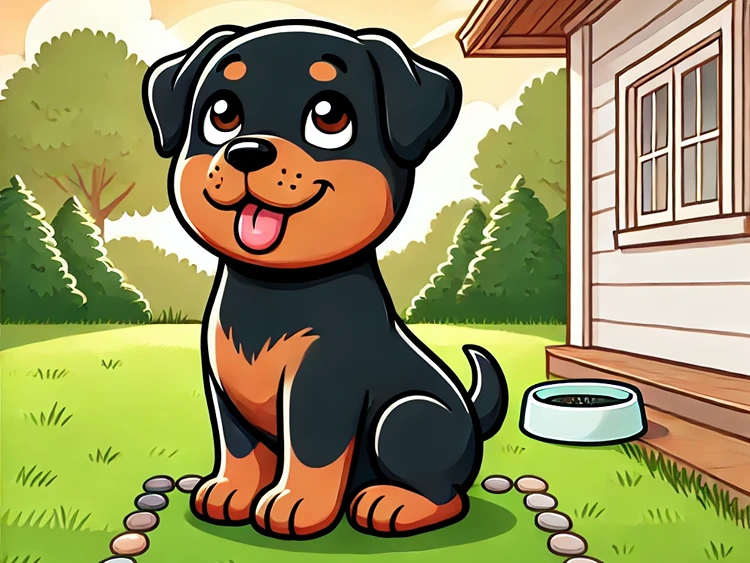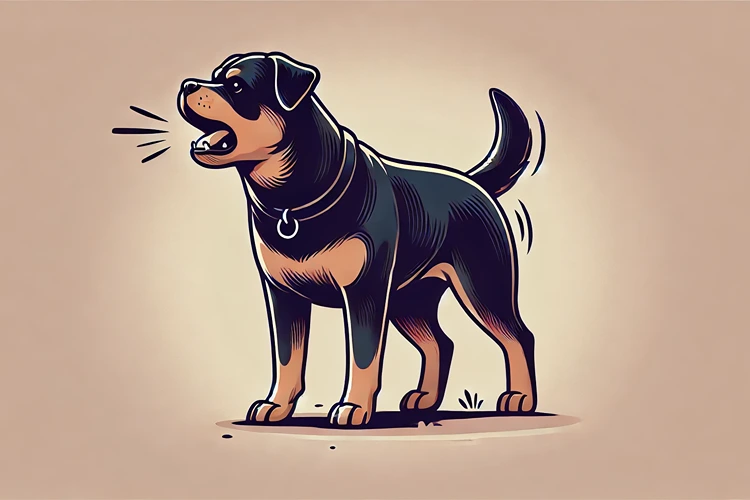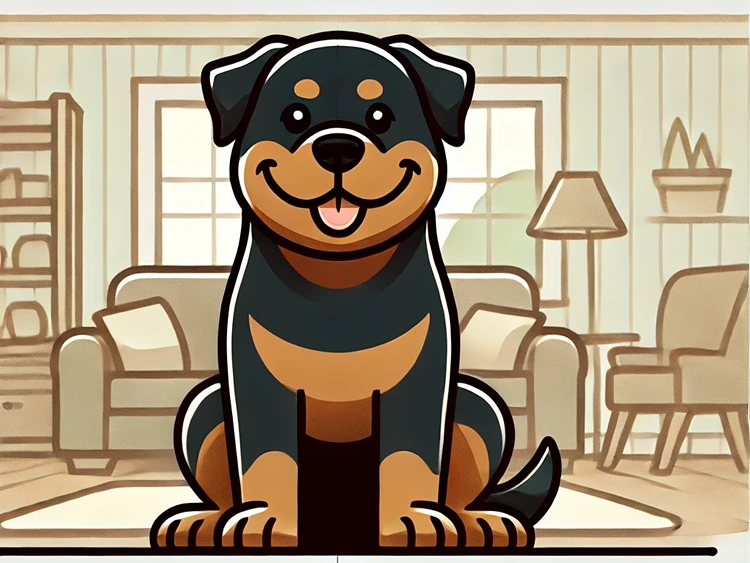Chewing can be a frustrating habit for any Rottweiler owner, especially when it’s your favorite chair or that brand-new couch that falls victim to their powerful jaws. Understanding why your Rottweiler chews on furniture and how to manage this behavior is key to protecting your home while keeping your dog happy and healthy. Let’s dive into the best methods to curb Rottweiler chewing habits on furniture in a way that’s effective and humane.
Why Do Rottweilers Chew on Furniture?
Before addressing how to stop furniture chewing, it’s important to understand why Rottweilers might exhibit this behavior. Chewing is a natural part of being a dog, and Rottweilers are no exception. However, there are several common reasons they might target your furniture.
Boredom and Lack of Stimulation
One of the main reasons Rottweilers chew on furniture is simply boredom. Rottweilers are intelligent and energetic dogs, and when they don’t receive enough mental or physical stimulation, they may resort to chewing to keep themselves entertained. Chewing can be an outlet for all that pent-up energy, especially if they’ve been left alone for long periods.
Paw-some Tip:
Make sure your Rottweiler gets plenty of exercise and mental stimulation each day. Aim for at least an hour of physical activity, combined with mentally challenging games or training sessions. A tired dog is far less likely to chew on furniture!
Teething in Puppies
If you have a Rottweiler puppy, teething is another big reason for chewing. Puppies go through a teething phase where their gums are sore, and chewing helps to soothe this discomfort. During this phase, they might chew on anything within reach—especially furniture legs.
Separation Anxiety
Separation anxiety is another common reason Rottweilers chew on furniture. If your dog becomes stressed when left alone, they may resort to destructive chewing as a way to cope with their anxiety. This type of chewing is usually accompanied by other signs, like pacing, whining, or scratching at doors.
How to Curb Furniture Chewing in Rottweilers
Now that we’ve identified why your Rottweiler might be chewing on furniture, it’s time to explore the most effective methods to stop this behavior. With the right techniques and a little patience, you can protect your furniture and keep your Rottweiler occupied in more appropriate ways.
Provide Plenty of Chew Toys
A simple and effective way to prevent your Rottweiler from chewing on furniture is to give them plenty of alternatives. Providing appropriate chew toys satisfies your dog’s need to chew while keeping your furniture safe.
- Choose durable toys made specifically for powerful chewers, like rubber or nylon bones.
- Consider puzzle toys that challenge your dog mentally while allowing them to chew.
- Rotate toys regularly to keep your Rottweiler interested and engaged.
Chew toys should always be available, especially when your dog is left alone. Over time, your Rottweiler will learn that their toys are the appropriate items to chew on—not your couch!
Use a Chewing Deterrent Spray
Another strategy is to apply a chewing deterrent spray to your furniture. These sprays are designed to taste unpleasant to dogs, discouraging them from biting into your belongings. Be sure to choose a spray that is safe for both your furniture and your Rottweiler.
Paw-some Tip:
Test the deterrent spray on a small, inconspicuous area of your furniture before applying it more widely. This ensures the spray won’t damage the material or cause any discoloration.
Increase Daily Exercise and Playtime
As mentioned earlier, boredom is a major contributor to destructive chewing in Rottweilers. By increasing your dog’s daily exercise and playtime, you can significantly reduce their urge to chew on furniture. Rottweilers need plenty of physical activity to keep them happy and healthy, so try incorporating longer walks, games of fetch, and other forms of play into their routine.
In addition to physical exercise, mental stimulation is just as important. Rottweilers are highly intelligent dogs that benefit from puzzle toys, training sessions, and other mentally engaging activities. This will help burn off excess energy and keep their minds occupied—leaving less time for furniture chewing.
How to Redirect Chewing Behavior
When you catch your Rottweiler chewing on furniture, it’s essential to redirect their behavior to something more appropriate. Here’s how to do it effectively:
Stay Calm and Redirect
If you see your dog chewing on furniture, stay calm and avoid yelling. Shouting can cause stress or anxiety, which may lead to more chewing. Instead, calmly remove the dog from the furniture and offer them a chew toy. Praise them when they start chewing the toy instead.
Use Positive Reinforcement
Rewarding your dog for good behavior is key to changing habits. When your Rottweiler chews on their toys instead of furniture, reward them with treats or praise. Over time, they will associate chewing their toys with positive experiences and be less inclined to chew on furniture.
Paw-some Tip:
Always have treats on hand to reward good behavior immediately. This will strengthen the association between proper chewing habits and positive reinforcement.
Preventing Future Chewing Incidents
Consistency is crucial when it comes to preventing future chewing incidents. Here are a few additional steps you can take to make sure your Rottweiler sticks to their chew toys and leaves the furniture alone.
Supervise Your Dog
If your Rottweiler has a habit of chewing on furniture, supervision is key. When you’re home, keep an eye on your dog to catch any inappropriate chewing behavior before it starts. This allows you to redirect them to a chew toy right away.
Use Crate Training
When you’re not able to supervise your dog, crate training can be a helpful tool. Providing a safe and comfortable space for your Rottweiler when you’re not home can prevent destructive chewing. Be sure to leave a couple of their favorite chew toys in the crate to keep them entertained.
When to Seek Professional Help
In some cases, Rottweiler chewing habits may persist despite your best efforts. If this happens, it may be time to seek help from a professional dog trainer or behaviorist. A professional can provide personalized guidance and help identify any underlying issues contributing to your dog’s chewing behavior, such as anxiety or behavioral disorders.
Rottie Stats:
According to recent studies, up to 90% of behavioral issues in dogs, including destructive chewing, are linked to insufficient mental stimulation and exercise.
By following these methods and understanding your Rottweiler’s needs, you can successfully curb their furniture chewing habits. With patience, consistency, and the right techniques, both you and your Rottweiler can enjoy a happy, chew-free home.
How Long Does It Take to Curb Rottweiler Chewing?
Patience and consistency are key when it comes to curbing your Rottweiler’s chewing habits, but you might be wondering how long it will take to see results. While every dog is different, it typically takes a few weeks of consistent effort to reduce or stop inappropriate chewing behavior. Factors such as the dog’s age, the severity of the chewing habit, and the methods you use can all impact the time it takes to curb the behavior.
Puppies vs. Adult Rottweilers
Puppies may take longer to stop chewing, especially when they are teething. During this period, they are more likely to chew on anything within reach, and the discomfort from teething may cause them to seek out furniture legs or other household items. With consistent redirection and appropriate chew toys, however, puppies can be taught to stop chewing on furniture within a few months.
For adult Rottweilers, especially those with well-established chewing habits, it may take a bit longer. Adult dogs who chew due to anxiety or boredom may need more time to adjust to new routines and mental stimulation before they stop targeting furniture.
How to Stay Consistent
The most important aspect of curbing chewing is consistency. Stick to a daily routine that includes plenty of exercise, mental stimulation, and access to appropriate chew toys. Redirect your dog whenever they chew on furniture, and always reward positive behavior. Over time, these efforts will pay off, and your Rottweiler will learn what’s acceptable to chew on.
Common Mistakes to Avoid When Curbing Chewing
As you work to stop your Rottweiler from chewing on furniture, there are some common mistakes to watch out for. Avoiding these pitfalls will make the process smoother and more effective.
Yelling or Punishing Your Dog
It can be frustrating to come home to chewed-up furniture, but yelling at your dog or using physical punishment will only make things worse. Rottweilers respond best to positive reinforcement and calm redirection. Punishing your dog after the fact won’t stop them from chewing in the future and may lead to fear or anxiety.
Inconsistent Training
Inconsistency is one of the biggest obstacles to successfully curbing chewing habits. If you allow your Rottweiler to chew on furniture one day and correct them the next, they will become confused and won’t understand what’s expected of them. Be consistent with redirection and rewards to create a clear and predictable environment for your dog.
Leaving Your Dog Alone for Long Periods
As mentioned earlier, boredom and anxiety are major causes of destructive chewing. Leaving your Rottweiler alone for extended periods without proper mental and physical stimulation can lead to furniture chewing. If you have to leave your dog alone, make sure they have plenty of toys to keep them entertained and consider crate training or hiring a dog walker to break up long days.
Rottie Stats:
Studies show that dogs left alone for more than 6 hours a day are 60% more likely to engage in destructive behaviors, such as chewing on furniture.
Chew-Proofing Your Home
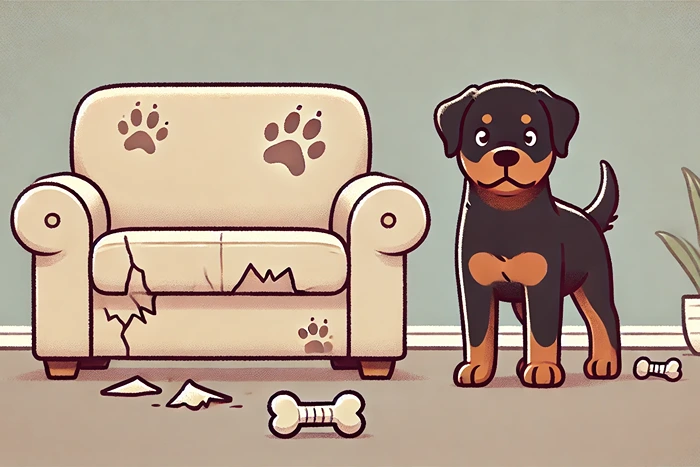
While you work on curbing your Rottweiler’s chewing habits, it’s a good idea to take some steps to chew-proof your home. This will help protect your furniture and other valuables while your dog is learning what’s acceptable to chew on.
Limit Access to Furniture
One of the simplest ways to prevent furniture chewing is to limit your Rottweiler’s access to the areas where they typically chew. You can use baby gates or playpens to create a dog-friendly space where they are less likely to encounter temptations. Additionally, crate training is a great way to keep your dog safe and prevent destructive chewing when you’re not home.
Furniture Covers and Barriers
If your dog targets a specific piece of furniture, consider using a cover or barrier to make it less appealing. Slipcovers, furniture protectors, and even double-sided tape can deter dogs from chewing on certain areas. Just be sure to monitor your dog closely, as some determined chewers may try to remove these barriers.
Why Chew-Proof Toys Are Important
When dealing with a strong chewer like a Rottweiler, it’s important to provide toys that can withstand their powerful jaws. Cheap or flimsy toys may break quickly, and pieces of the toy can become choking hazards or cause digestive problems if swallowed. Here’s why chew-proof toys are essential for curbing destructive chewing:
Durability and Safety
Chew-proof toys are specifically designed to be durable enough for powerful chewers like Rottweilers. These toys are often made of tough rubber, nylon, or other strong materials that can handle hours of chewing without breaking apart. This ensures that your dog stays safe and entertained, reducing their urge to chew on furniture.
Long-Lasting Engagement
Rottweilers are intelligent dogs that need mental stimulation to stay happy. Chew-proof toys, especially those that double as puzzle toys, can keep your dog engaged for longer periods. This not only satisfies their natural chewing instincts but also reduces boredom, which is one of the main causes of furniture chewing.
By investing in high-quality, durable chew toys, you’ll be able to keep your Rottweiler happy and entertained while protecting your furniture from damage.
Chew Toy Durability Comparison for Rottweilers
| Type of Chew Toy | Durability Rating | Recommended for Chewers? |
|---|---|---|
| Rubber Chew Toys | ★★★★★ | Yes, highly durable and safe for strong chewers like Rottweilers |
| Nylon Bones | ★★★★☆ | Yes, durable but monitor for wear over time |
| Rope Toys | ★★★☆☆ | Moderate, best for supervised play due to potential fraying |
| Stuffed Toys | ★☆☆☆☆ | No, these can be destroyed easily and pose a choking hazard |
FAQs
Wrapping Up
Curving Rottweiler chewing habits on furniture requires patience, consistency, and understanding of your dog’s needs. From offering durable chew toys to addressing underlying issues like boredom or anxiety, these methods provide a clear pathway to success. Remember, prevention and redirection are the best strategies, and always focus on positive reinforcement rather than punishment. By taking the time to properly train and engage with your Rottweiler, you can eliminate destructive chewing and create a happier, healthier environment for both you and your dog. If persistent chewing continues, consider consulting a professional to ensure your Rottweiler’s needs are fully met.
Ultimately, ensuring your Rottweiler is mentally and physically stimulated while offering appropriate alternatives to chew is the key to protecting your furniture and your dog’s well-being. If you stick to these proven strategies, your Rottweiler will learn to respect the boundaries of your home, leading to a harmonious relationship and a chew-free household.

